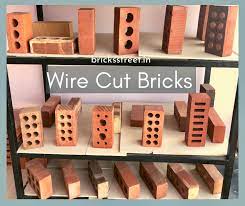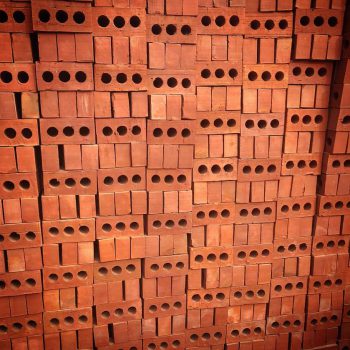Traditional Bricks - Bricks Street's Legacy
When it comes to enhancing the aesthetics and durability of a building's exterior, cladding plays a crucial role. Traditional bricks have been a popular choice for cladding for centuries, but there are various types of cladding materials and techniques available today. In this article, we'll explore the different types of cladding options, with a special focus on traditional bricks by Brickstreet.
Traditional Brick Cladding:
Traditional bricks, like those offered by Brickstreet, are one of the most timeless and durable cladding choices. They are known for their classic appeal and robust construction. Traditional brick cladding not only provides excellent insulation but also offers a charming, rustic look to the exterior of any building. It's a versatile option available in various colors and textures, making it suitable for both residential and commercial projects.
Stone Cladding:
Stone cladding involves the application of natural or artificial stone veneers to the building's exterior. It offers a rustic and elegant appearance. Natural stone cladding is renowned for its durability, while artificial stone cladding provides a more cost-effective alternative with similar aesthetics.
Wood Cladding:
Wood cladding adds warmth and natural beauty to a structure. It is available in various types of wood, such as cedar, pine, and oak, each offering unique grains and colors. Wood cladding requires regular maintenance, including sealing and painting, to protect it from the elements.
Metal Cladding:
Metal cladding is a contemporary choice, often used in modern architecture. Materials like aluminum, steel, and zinc are commonly used for metal cladding. It offers a sleek and minimalist appearance while providing durability and weather resistance.
Fiber Cement Cladding:
Fiber cement cladding combines the durability of cement with the versatility of wood. It is available in various finishes, including smooth, textured, and panelized options. Fiber cement cladding is known for its low maintenance and resistance to rot, making it an excellent choice for long-term use.
Vinyl Cladding:
Vinyl cladding is a budget-friendly option that is easy to install and maintain. It comes in various colors and styles, offering flexibility in design. While it may not have the same level of durability as other materials, it provides good insulation and weather resistance.
Brick Veneer Cladding:
Brick veneer cladding combines the aesthetics of traditional bricks with a lightweight construction. It involves a thin layer of bricks adhered to the building's exterior. This option allows for the timeless look of bricks without the added weight and cost.
In conclusion, when it comes to cladding options, traditional bricks by Brickstreet stand out for their timeless appeal, durability, and versatility. However, there are various other cladding materials and techniques available, each with its unique characteristics and advantages. The choice of cladding material should be based on your specific project requirements, budget, and design preferences.When it comes to enhancing the aesthetics and durability of a building's exterior, cladding plays a crucial role. Traditional bricks have been a popular choice for cladding for centuries, but there are various types of cladding materials and techniques available today. In this article, we'll explore the different types of cladding options, with a special focus on traditional bricks by Brickstreet.
Traditional Brick Cladding:
Traditional bricks, like those offered by Brickstreet, are one of the most timeless and durable cladding choices. They are known for their classic appeal and robust construction. Traditional brick cladding not only provides excellent insulation but also offers a charming, rustic look to the exterior of any building. It's a versatile option available in various colors and textures, making it suitable for both residential and commercial projects.
Stone Cladding:
Stone cladding involves the application of natural or artificial stone veneers to the building's exterior. It offers a rustic and elegant appearance. Natural stone cladding is renowned for its durability, while artificial stone cladding provides a more cost-effective alternative with similar aesthetics.
Wood Cladding:
Wood cladding adds warmth and natural beauty to a structure. It is available in various types of wood, such as cedar, pine, and oak, each offering unique grains and colors. Wood cladding requires regular maintenance, including sealing and painting, to protect it from the elements.
Metal Cladding:
Metal cladding is a contemporary choice, often used in modern architecture. Materials like aluminum, steel, and zinc are commonly used for metal cladding. It offers a sleek and minimalist appearance while providing durability and weather resistance.
Fiber Cement Cladding:
Fiber cement cladding combines the durability of cement with the versatility of wood. It is available in various finishes, including smooth, textured, and panelized options. Fiber cement cladding is known for its low maintenance and resistance to rot, making it an excellent choice for long-term use.
Vinyl Cladding:
Vinyl cladding is a budget-friendly option that is easy to install and maintain. It comes in various colors and styles, offering flexibility in design. While it may not have the same level of durability as other materials, it provides good insulation and weather resistance.
Brick Veneer Cladding:
Brick veneer cladding combines the aesthetics of traditional bricks with a lightweight construction. It involves a thin layer of bricks adhered to the building's exterior. This option allows for the timeless look of bricks without the added weight and cost.
In conclusion, when it comes to cladding options, traditional bricks by Brickstreet stand out for their timeless appeal, durability, and versatility. However, there are various other cladding materials and techniques available, each with its unique characteristics and advantages. The choice of cladding material should be based on your specific project requirements, budget, and design preferences.




Comments
Post a Comment